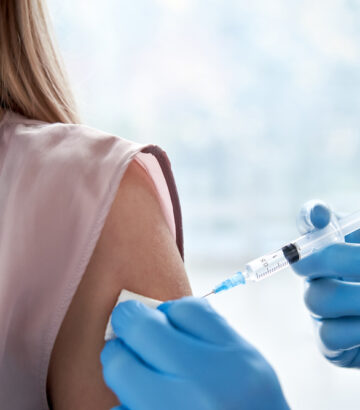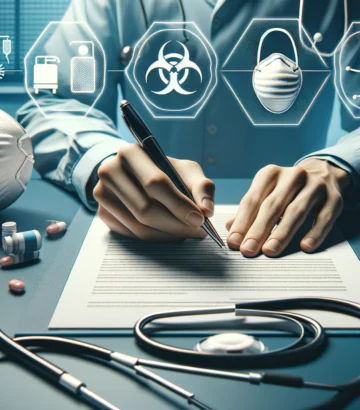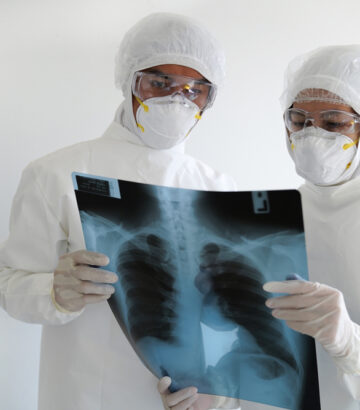Scientists propose Mass Testing for the fight against COVID-19
Mass testing can control new variants
Mass testing is an effective tool for controlling the spread of SARS-CoV-2 and its variants and is a financially viable alternative to ongoing economic disruption, continued illness and accumulating disability. It is important to take advantage of mass testing to reduce the spread of the virus, quickly identify cases, and rapidly reduce transmission while continuing social and economic activity.
In an article [1] by Cecile Philippe, Ph.D., Yaneer Bar-Yam, Ph.D., Stephane Bilodeau, Eng. Ph.D., Carlos Gershenson, Ph.D., Sunil K. Raina, M.D., Shu-Ti Chiou, M.D., PhD, Gunhild A. Nyborg, M.D., Ph.D., and Matthias F. Schneider, Ph.D., the World Health Network points to the example of North Rhine-Westphalia, Germany, which implemented pooled PCR tests in more than 3,700 schools and 698 daycare facilities over the course of 13 weeks. During this time, 800,000 individuals were tested twice per week with a total of nearly 17,000,000 swabs, demonstrating the feasibility of mass testing at a large scale.
The team is calling for implementation of mass testing strategies in order to reduce the amount of illness and suffering in the population and to keep the economy open. They believe that mass testing could be the key to ending the pandemic and preventing the accumulation of long term illness and disability.
Overall, testing has become both easier and more comfortable because of gargle spit and lolly (lollipop) testing, which involves putting a cotton swab in your mouth for 30 seconds. These methods are effective and allow for taking samples at home, where it can be integrated into daily routines.
While rapid antigen (lateral flow) tests have declined in accuracy, PCR and lower cost LAMP tests are still accurate and can be effective for mass testing.
Additionally, sample collection and drop off can be part of daily procedures such as collecting samples at work or at large supermarket chains. Furthermore, mass testing is feasible and has been demonstrated practically in several countries and on various scales. This testing strategy reduces the transmission rate of the virus, and can be as or even more effective than a strict lockdown.
Why act?
With widespread evidence of the detrimental long-term health and economic effects of COVID-19 mounting, the team of international researchers believe that regular asymptomatic screening of the general population could dramatically reduce the number of cases, while allowing for economic and social activity to continue.
There is mounting evidence of serious health and economic damage due to ongoing high levels of illness and the detrimental long-term effects of the virus, including long COVID symptoms and organ damage.
This has highlighted the need for effective public health policies to minimize the spread of SARS-CoV-2 and its variants. As a result, more effective tools are needed to control transmission and thereby limit the economic and social ramifications of the pandemic.
Mass testing
While mass testing has been discussed and implemented multiple times, the new paper shows how robust the strategy is. The method is effective even when the virus becomes more transmitting, or if there are individuals who are not compliant: the method still works, but may require increasing the frequency of testing. Non-compliance by part of the population may also be compensated by an increase in test frequency, or alternatively, the implementation of better ventilation, air filtering, and the use of masks.
By regularly screening the general population for asymptomatic cases, mass testing quickly identifies cases. Rapid isolation of those who are infected reduces the spread of the virus.
Not only is mass testing an effective way to control the spread of SARS-CoV-2, but it is also highly cost-effective compared to other options, including the accumulation of long term effects of illness. Mass testing with a PCR or LAMP test can reduce the transmission rate of SARS-CoV-2 by more than a factor of 10, and obtaining test results now costs about 10 dollars or even less.
Mass testing has been shown to be successful and can be implemented quickly and efficiently, allowing for a rapid reduction of cases.
Economic benefits
Mass testing provides a sound economic approach to managing the pandemic and can help reduce the economic fallout, including due to its reduction of uncertainty about illness for both individuals and organizations. It allows for businesses, schools, and other activities to remain open in a safe and controlled manner.
Mass testing is an investment providing early detection of new cases and thus preventing larger outbreaks, providing a layer of protection against illness and economic losses. It can also help prevent even large-scale events, such as sporting events, conventions, and festivals, from the risk of rapidly spreading the virus.
Bringing the pandemic to an end
In today’s world, the strategy of mass testing is becoming increasingly needed. As the virus continues to mutate, the transmission rate is increasing causing both economic impacts and accumulation of long term illness. Mass testing is a robust and cost-effective way to reduce transmission and prevent long-term health effects and economic disruption. It is a strategy that should be implemented now to help bring the pandemic to an end.
Philippe, C., Bar-Yam, Y., Bilodeau, S., Gershenson, C., Raina, S. K., Chiou, S.-T., Nyborg, G. A., & Schneider, M. F. (2023). Mass testing to end the COVID-19 public health threat. The Lancet Regional Health – Europe, 25, 100574. https://doi.org/10.1016/j.lanepe.2022.100574











